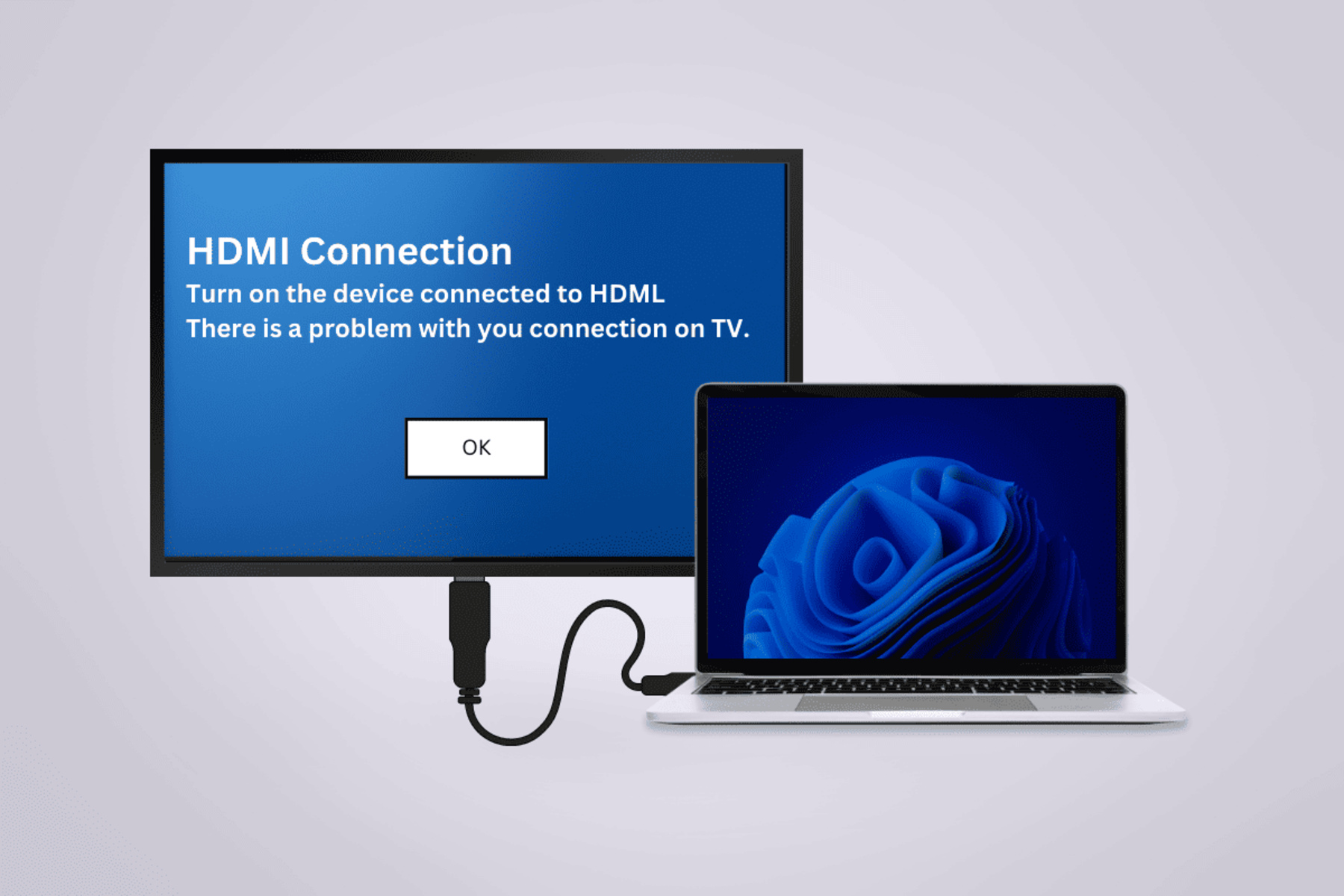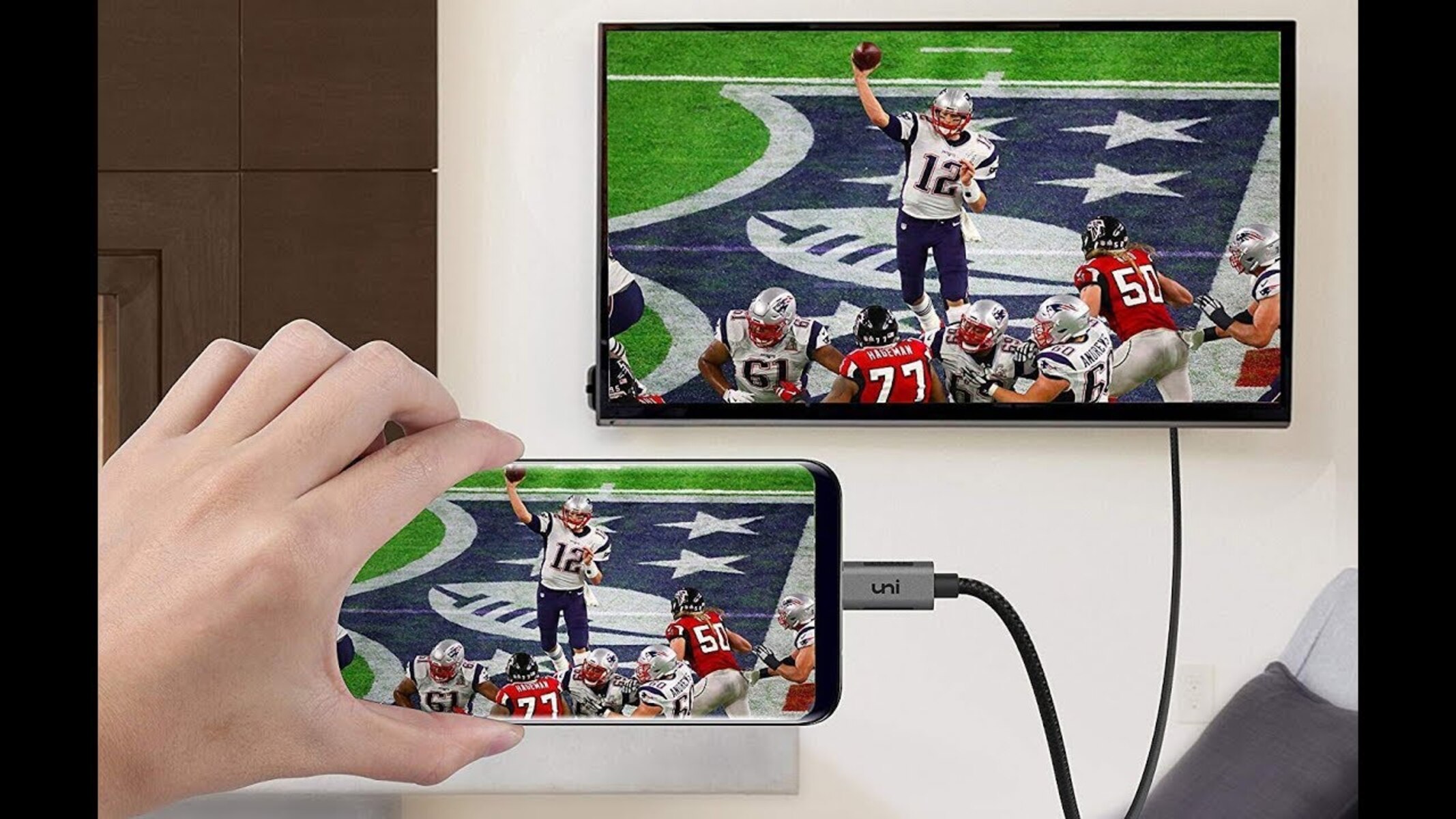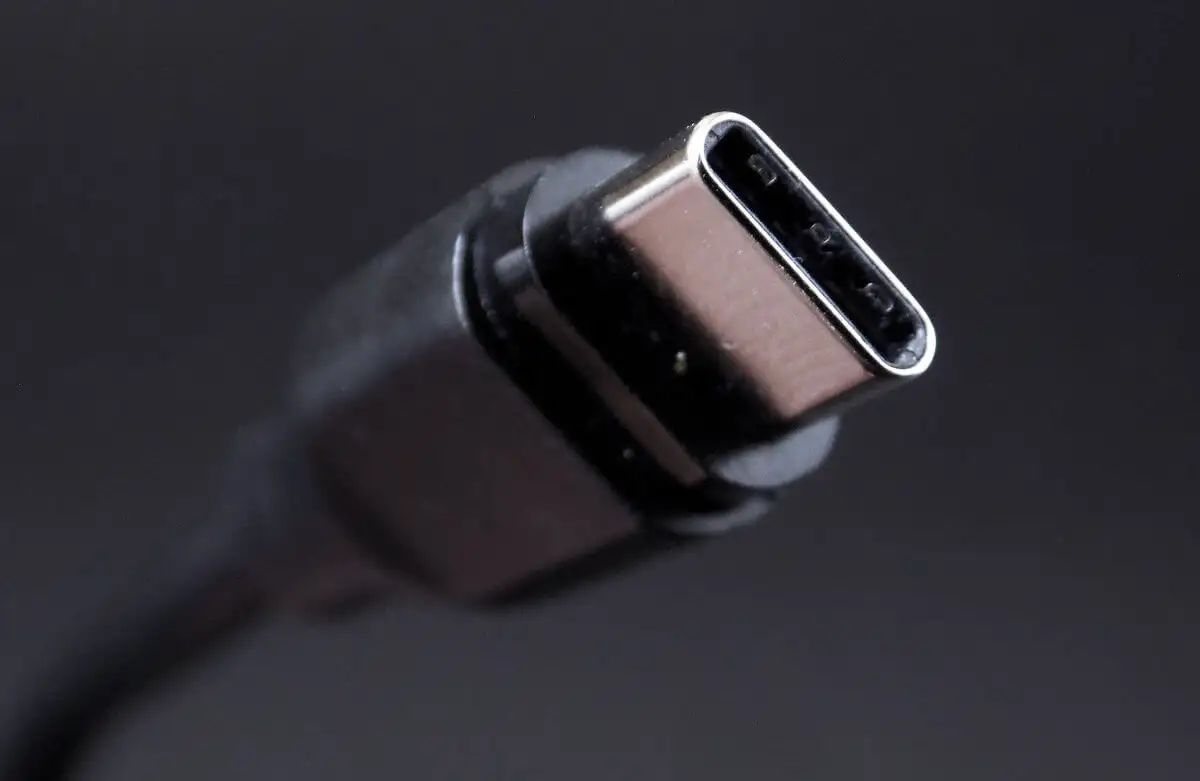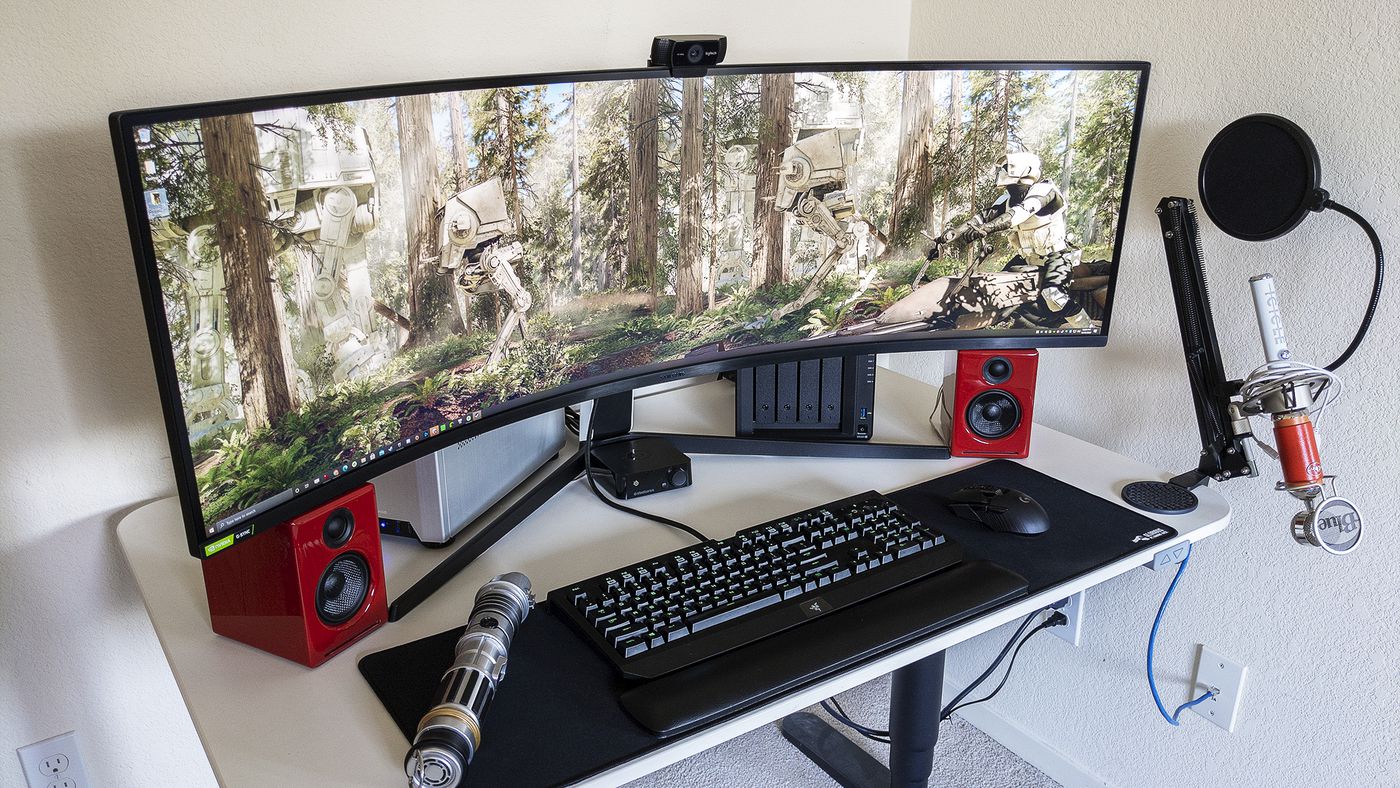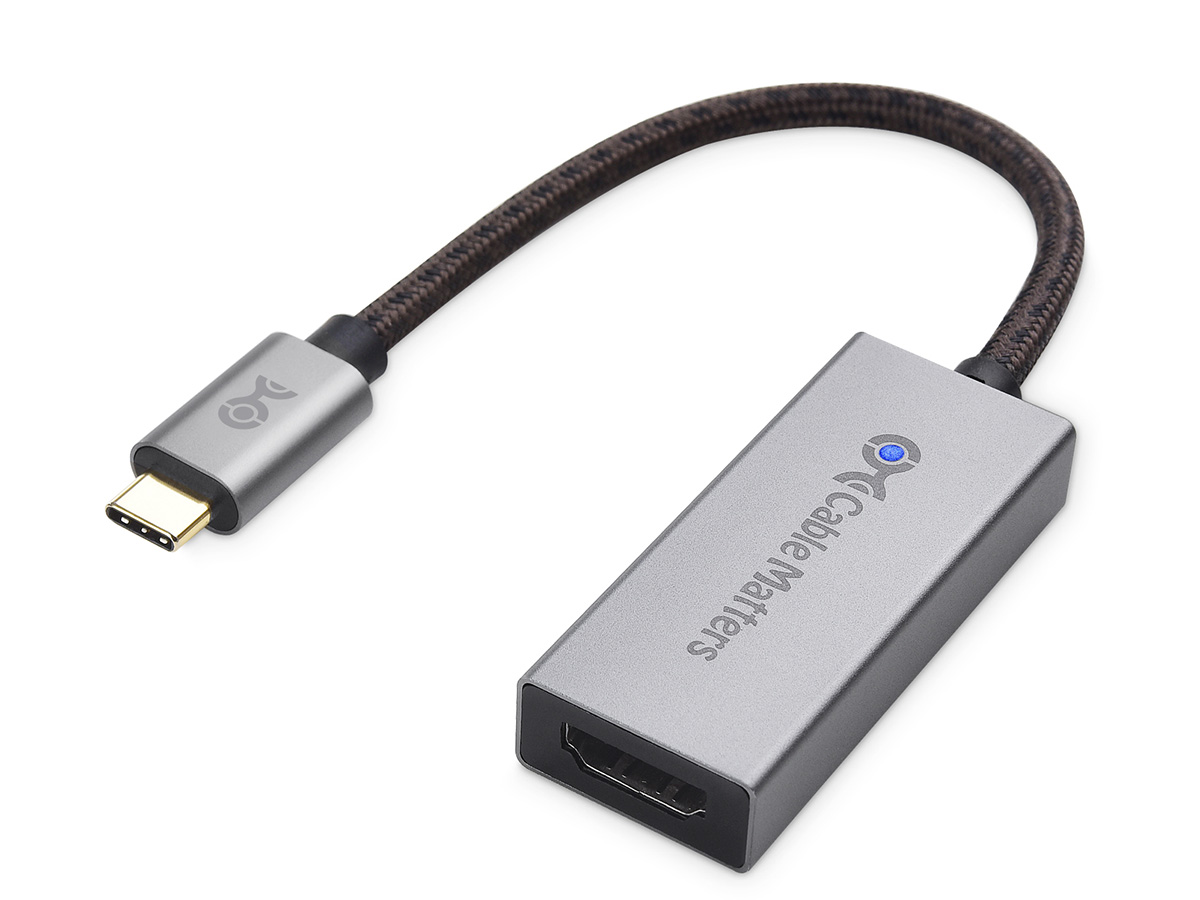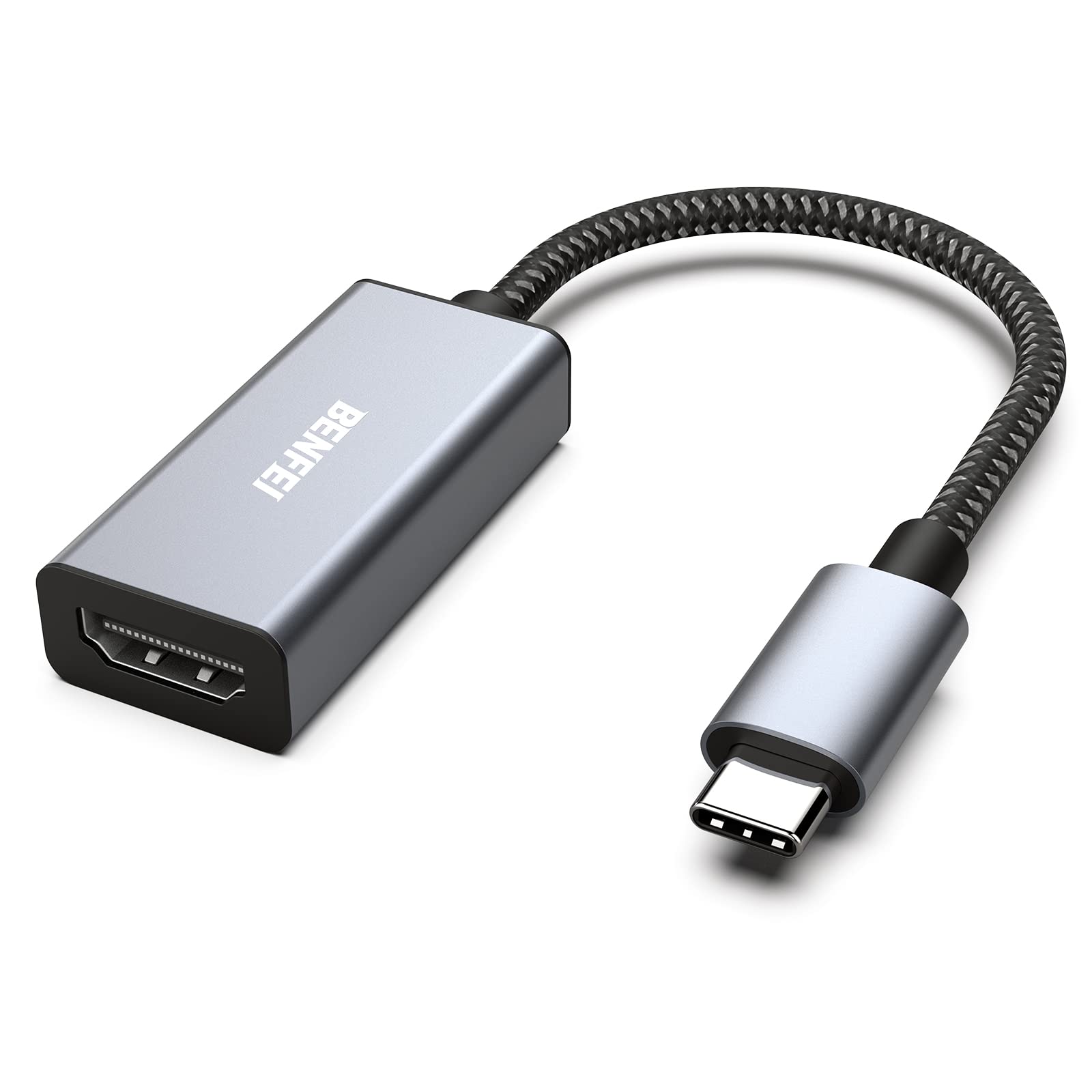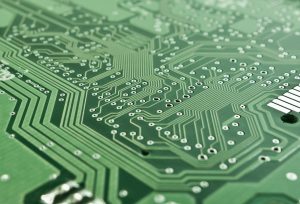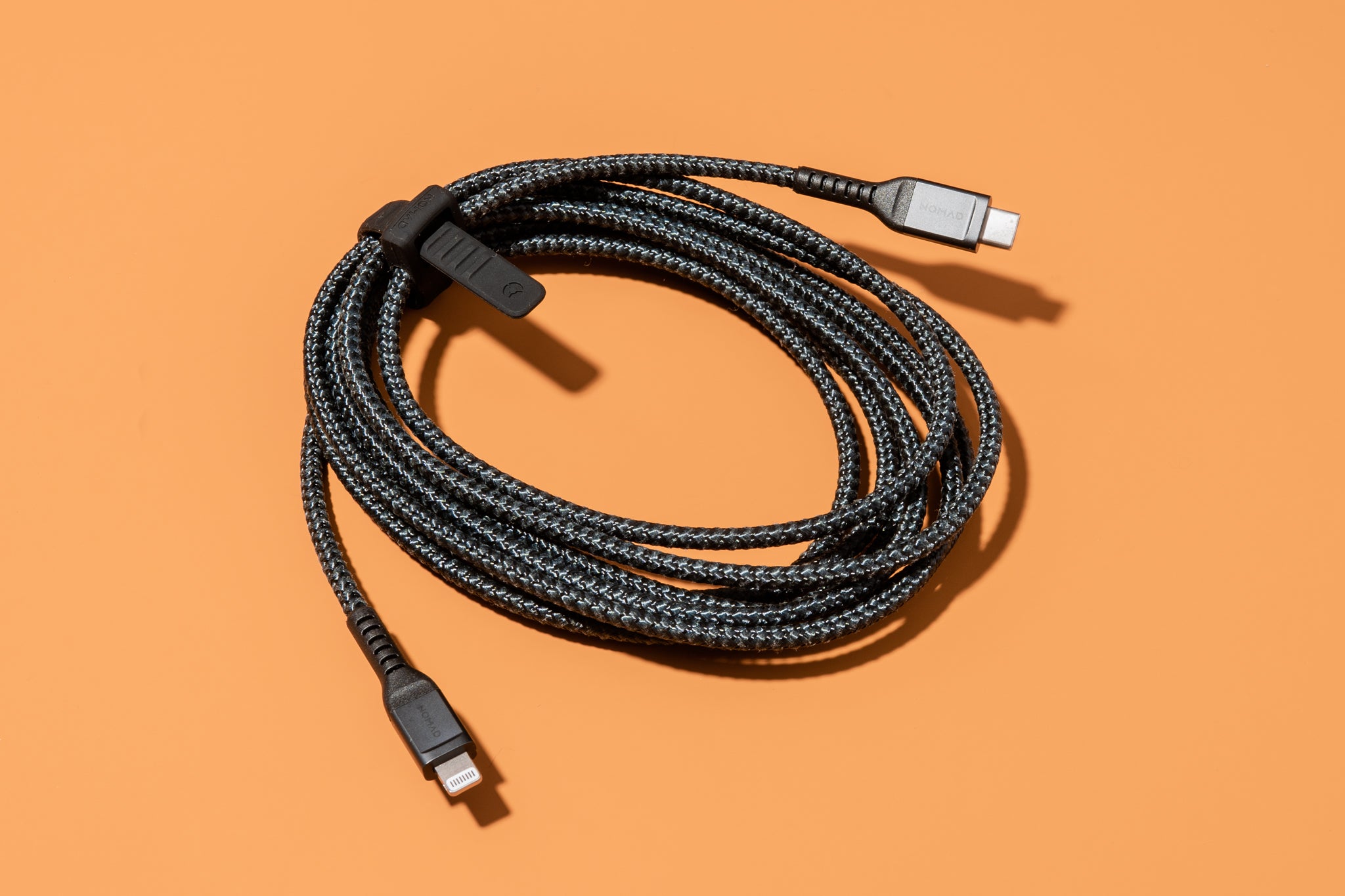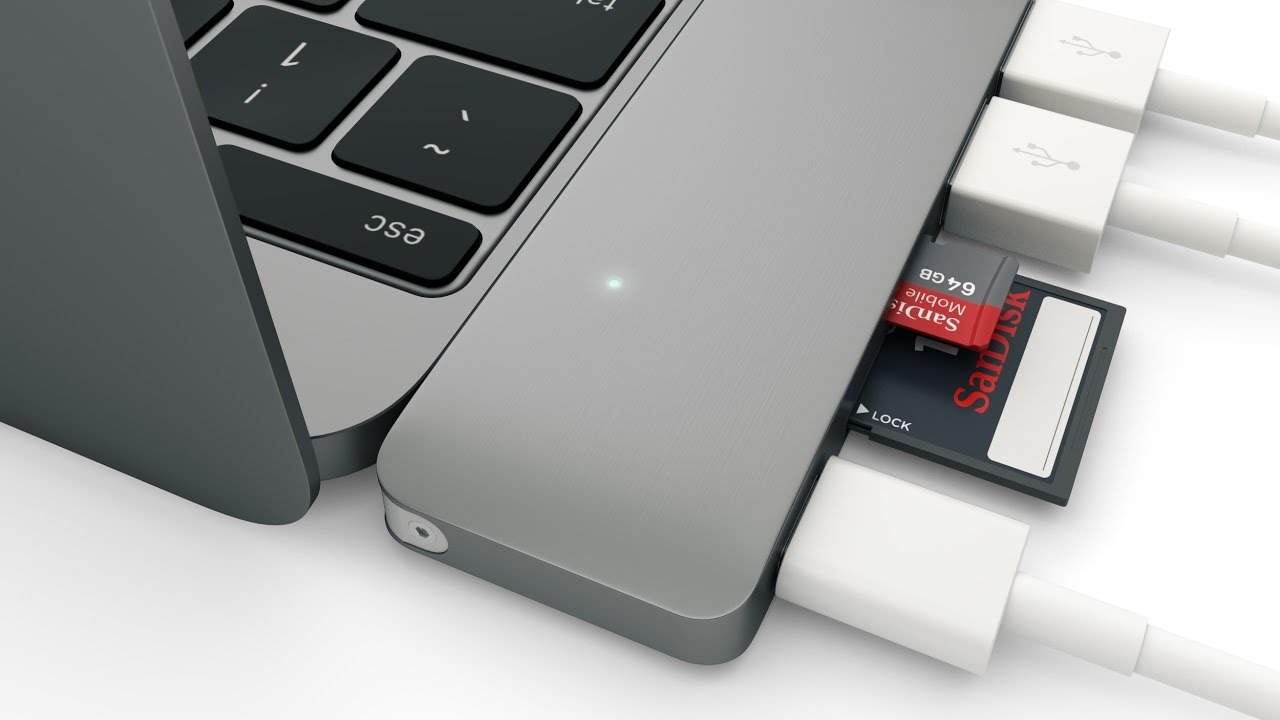Introduction
Welcome to the world of USB-C to HDMI adapters! These handy devices allow you to connect your USB-C enabled device, such as a laptop or smartphone, to an HDMI display, such as a monitor or TV. They provide a convenient way to view your content on a larger screen, making presentation, streaming, and gaming experiences more enjoyable.
While USB-C to HDMI adapters are designed to be plug-and-play, you may sometimes encounter issues where the adapter fails to work as expected. Don’t worry, you’re not alone! In this article, we’ll explore some common problems that users face with USB-C to HDMI adapters and how you can troubleshoot them.
Before we dive into the details, it’s important to note that USB-C to HDMI adapters come in different shapes, sizes, and functionalities. Some adapters support video and audio transmission, while others only transmit video. Additionally, the compatibility and performance of these adapters can vary across different devices and operating systems.
Now, let’s begin our troubleshooting journey and discover the possible reasons behind your USB-C to HDMI adapter not working.
Common Issues with USB-C to HDMI Adapters
USB-C to HDMI adapters can encounter various issues that prevent them from functioning properly. Knowing these common problems can help you identify the root cause and resolve the issue quickly. Let’s take a look at some of the most common issues:
- No display on the external screen: One of the most frequent issues users face is when there is no display on the external monitor or TV connected through the USB-C to HDMI adapter. This could be due to compatibility issues, faulty connections, or incorrect display settings.
- Intermittent connection: Sometimes, the connection between the USB-C device and the HDMI display becomes unstable, resulting in an intermittent display. This can be frustrating, especially during important presentations or while watching HD videos.
- Poor video quality: Another common issue is poor video quality when using a USB-C to HDMI adapter. The video may appear blurry, pixelated, or distorted, making it difficult to enjoy a clear and immersive viewing experience.
- No audio output: In some cases, while the video is successfully transmitted to the external display, there is no audio output. This can happen if the USB-C to HDMI adapter is not designed to pass through audio or if the audio output settings are not correctly configured.
- Compatibility issues: USB-C to HDMI adapters may not work on all devices or operating systems. Compatibility issues arise when the device or system does not support the necessary protocols or standards required for the adapter to function.
These common issues can be frustrating, but fear not! In the following sections, we will explore the possible causes of these problems and provide effective troubleshooting steps to help you get your USB-C to HDMI adapter up and running.
Compatibility Issues
Compatibility issues are a common reason why USB-C to HDMI adapters may not work as expected. It’s important to ensure that your devices and operating systems support the necessary protocols and standards for the adapter to function properly. Let’s take a closer look at some of the compatibility issues you may encounter:
1. Device Compatibility: Not all devices with USB-C ports support video output through USB-C to HDMI adapters. Older devices or those with limited compatibility may not have the necessary hardware or software requirements to transmit video signals. Ensure that your device supports video output over USB-C before attempting to use the adapter.
2. Operating System Support: The operating system on your device plays a crucial role in determining adapter compatibility. Different operating systems have varying levels of support for USB-C to HDMI adapters. Make sure that your operating system is updated to the latest version to minimize compatibility issues.
3. HDMI Version: HDMI standards and versions evolve over time. Newer HDMI versions support higher resolutions and features, such as HDR (High Dynamic Range) and higher refresh rates. If your USB-C to HDMI adapter is designed for an older HDMI version, it may not be compatible with devices that require a newer version of HDMI.
4. HDCP (High-bandwidth Digital Content Protection): HDCP is a content protection protocol used to prevent unauthorized copying of digital audio and video content. Some HDMI displays require HDCP support for content playback. If your USB-C to HDMI adapter does not support HDCP, you may encounter issues when connecting to HDCP-enabled displays.
5. Adapter Quality: The quality of the USB-C to HDMI adapter itself can also impact compatibility. Lower-quality adapters may not adhere to standard specifications, resulting in compatibility issues. It’s recommended to purchase adapters from reputable manufacturers to ensure compatibility and reliable performance.
When facing compatibility issues, it’s advisable to consult the product manuals and documentation of your devices and adapters to verify compatibility. Additionally, reaching out to the manufacturer’s customer support can provide valuable assistance in resolving compatibility-related problems.
Faulty Connection
A faulty connection is another common issue that can prevent your USB-C to HDMI adapter from working. A weak or unstable connection can result in intermittent display, flickering, or no display at all. Let’s delve into some potential causes and troubleshooting steps for faulty connections:
1. Loose Connections: Ensure that both ends of the USB-C to HDMI adapter are securely connected. Check that the USB-C connector is inserted firmly into the USB-C port on your device and that the HDMI cable is securely connected to the adapter and the HDMI display.
2. Dust or Debris: Dust or debris can accumulate over time around the USB-C and HDMI ports, interfering with the connection. Use compressed air or a soft brush to clean out any debris that may be obstructing the connection points.
3. Damaged Cable or Adapter: Check the USB-C to HDMI cable for any signs of damage, such as frayed wires or bent connectors. If you notice any damage, replace the cable with a new one. Similarly, inspect the USB-C to HDMI adapter for any visible damage that may affect its performance.
4. Check HDMI Port: Ensure that the HDMI port on the display device is functional. Try connecting another HDMI device directly to the display to verify if the issue lies with the HDMI port itself.
5. Signal Interference: Signal interference from nearby electronic devices can disrupt the connection between the USB-C to HDMI adapter and the HDMI display. Move any electronic devices, such as routers or speakers, away from the adapter and display to minimize interference.
6. Check for USB-C Alternate Mode: Some USB-C devices require the USB-C port to support Alternate Mode for video output. Check the specifications of your device to ensure it supports video output over USB-C and that the USB-C port is enabled for this functionality.
Troubleshooting a faulty connection primarily involves ensuring secure and clean connections, checking for any damages or issues with the cable and adapter, and eliminating signal interference. By following these steps, you can improve the chances of establishing a stable and reliable connection for your USB-C to HDMI adapter.
Incorrect Cable or Adapter
Using an incorrect cable or adapter can lead to compatibility issues and prevent your USB-C to HDMI adapter from working properly. It’s essential to ensure that you’re using the right cable and adapter for your specific device. Here are a few factors to consider:
1. Cable Type: USB-C to HDMI adapters come in different types, such as HDMI 1.4, HDMI 2.0, or HDMI 2.1. Each type supports different features and resolutions. Make sure you’re using a cable that aligns with the capabilities of your devices and the desired output quality.
2. Adapter Type: USB-C to HDMI adapters also vary in terms of their capabilities. Some adapters may only support video output, while others support both video and audio. Ensure that the adapter you’re using is designed for your specific needs, whether it’s for presentations, multimedia playback, or gaming.
3. Cable Length: Cable length can also impact the performance of your USB-C to HDMI adapter. Longer cables may result in signal degradation and weaker video quality. Conversely, cables that are too short may restrict your ability to connect devices comfortably. Choose a cable length that suits your needs while considering the impact on signal quality.
4. Adapter Quality: The quality of the cable and adapter can affect its compatibility and performance. Low-quality cables or adapters may not adhere to standard specifications, leading to issues with connectivity, video quality, or audio output. Invest in reputable brands and quality products to ensure optimal performance.
5. Check for Multiple Adapters: When using multiple adapters in succession, such as a USB-C to HDMI adapter connected to another HDMI adapter, compatibility issues can arise. Each adapter in the chain must be compatible and properly configured to ensure successful transmission of video and audio signals.
It’s crucial to verify that the cable and adapter you’re using are suitable for your specific requirements. Refer to the manufacturer’s specifications and documentation to ensure compatibility. If you’re unsure, reach out to customer support for assistance in selecting the correct cable and adapter for your USB-C to HDMI setup.
Display Settings
Display settings play a vital role in ensuring proper functionality of your USB-C to HDMI adapter. Incorrect display settings can cause issues such as no signal, blurry or distorted visuals, or incorrect screen resolution. Let’s explore some display settings that may need adjustment:
1. Screen Resolution: Ensure that the screen resolution on your device is set to a compatible resolution with the external HDMI display. Mismatched resolutions can result in display issues or a stretched or underscaled image. Adjust the screen resolution to match the native resolution of the external display for optimal performance.
2. Mirroring vs. Extended Display: Display settings often allow you to choose between mirroring your device’s screen or extending it to the external HDMI display. Verify that the correct display mode is selected based on your desired usage. Mirroring duplicates the content on both screens, while extended display expands your desktop to the secondary HDMI display.
3. Refresh Rate: The refresh rate determines how often the image on the screen is refreshed and can impact the smoothness of visuals. Some HDMI displays may have specific refresh rate requirements. Make sure the refresh rate is set to a value supported by both your device and the HDMI display.
4. Display Orientation: Check the display orientation settings, especially if the image appears rotated or upside down on the HDMI display. You can usually adjust the display orientation in the system settings to match the physical orientation of the connected display.
5. Audio Output: If you are using a USB-C to HDMI adapter that supports audio output, ensure that the audio settings on your device are configured correctly. Check that the audio output is set to the HDMI device or external display, rather than the built-in speakers or headphones.
6. Firmware and Driver Updates: Keeping your device’s firmware or drivers updated can address compatibility issues and improve the overall performance of your USB-C to HDMI adapter. Check for any available updates for your device and install them if necessary.
By reviewing and adjusting these display settings, you can optimize the performance and compatibility of your USB-C to HDMI adapter. Remember to consult your device’s user manual or the manufacturer’s support documentation for specific instructions on adjusting these settings.
Insufficient Power
Insufficient power can be a common issue when using USB-C to HDMI adapters, especially when connecting power-hungry devices or using adapters that require additional power. Inadequate power supply can result in various problems, such as no display, intermittent connection, or unstable video output. Let’s explore some possible causes and solutions for insufficient power:
1. Power Delivery (PD) Support: USB-C to HDMI adapters that support Power Delivery (PD) can provide power to your device while transmitting audio and video signals. However, not all adapters or devices support PD. Verify that your adapter and device both support PD for power delivery over USB-C.
2. Using the Incorrect Power Adapter: Some USB-C devices require a specific power adapter to provide enough power for the adapter and connected HDMI display. Using an incompatible or lower-rated power adapter can result in insufficient power supply. Check the recommended power adapter specifications for your device and ensure it is used during connection.
3. Daisy-Chaining and Power Limitations: If you’re daisy-chaining multiple devices through your USB-C port, it can lead to power limitations. Each device in the chain consumes power, and exceeding the power limits of the USB-C port can cause power-related issues. Consider disconnecting other unnecessary devices or using a USB-C hub with its own power supply to ensure sufficient power for the adapter.
4. USB-C Port Capabilities: Different USB-C ports on your device may have varying power capabilities. Check your device’s user manual to determine which USB-C port is designed for video output and power delivery. Connecting the adapter to the wrong USB-C port can result in insufficient power supply.
5. External AC Power: If you’re using a USB-C to HDMI adapter that requires additional power, such as an active adapter or one with built-in signal amplification, ensure that it is connected to an external power source if required. This can help to provide the necessary power for stable video transmission.
By addressing power-related issues, you can ensure a stable and reliable connection between your USB-C to HDMI adapter and the HDMI display. Verify the power requirements of your devices, use compatible power adapters, and consider power delivery capabilities to ensure sufficient power supply for smooth operation.
Troubleshooting Steps
When your USB-C to HDMI adapter is not working, troubleshooting steps can help you identify and resolve the issue. Here are some recommended troubleshooting steps to get your adapter up and running:
1. Check Physical Connections: Ensure that all connections between the USB-C to HDMI adapter, the USB-C port on your device, and the HDMI display are secure. Disconnect and reconnect the cables to eliminate any loose connections.
2. Verify Compatibility: Confirm that your USB-C device supports video output over USB-C and that your USB-C to HDMI adapter is compatible with both your device and the HDMI display. Check the documentation or manufacturer’s website for compatibility information.
3. Update Drivers and Firmware: Install any available driver updates or firmware updates for your device, the USB-C to HDMI adapter, or the HDMI display. Updated software can often address compatibility issues and improve performance.
4. Adjust Display Settings: Make sure the display settings on your device are configured correctly. Check the screen resolution, refresh rate, display orientation, and audio output settings to ensure they align with the capabilities of the HDMI display and your device.
5. Use Alternate HDMI Ports or Displays: Try connecting the USB-C to HDMI adapter to different HDMI ports on the display device. If possible, test the adapter with a different HDMI display to rule out any specific compatibility issues with a particular port or display.
6. Test with a Different Adapter or Cable: If you have access to another USB-C to HDMI adapter or cable, try using it to see if the issue persists. This can help determine if the problem lies with the adapter or cable itself.
7. Reboot or Reset Devices: Sometimes a simple reboot or reset of your device, the USB-C to HDMI adapter, or the HDMI display can resolve connectivity issues. Power off and on the devices or follow the reset instructions provided by the manufacturer.
8. Contact Manufacturer Support: If none of the troubleshooting steps resolve the issue, reach out to the manufacturer’s customer support for further assistance. They may provide specific guidance or offer a solution based on the characteristics of your device and adapter.
By following these troubleshooting steps, you can identify and resolve common issues with your USB-C to HDMI adapter. Remember to refer to the documentation provided with your device, adapter, and HDMI display for specific troubleshooting suggestions and instructions.
Conclusion
USB-C to HDMI adapters provide a convenient way to connect your USB-C enabled device to an HDMI display. However, encountering issues with these adapters is not uncommon. In this article, we explored some common problems users face with USB-C to HDMI adapters and provided troubleshooting steps to help resolve them.
We discussed compatibility issues and the importance of ensuring that your devices and operating systems support the necessary protocols for the adapter to function correctly. We also highlighted the significance of establishing a secure and stable connection by checking for loose connections, cleaning ports, and inspecting cables and adapters for any damage.
Additionally, we examined the importance of correct display settings, including screen resolution, mirroring or extended display modes, refresh rate, and audio output settings. Ensuring that these settings are properly configured can optimize the performance and compatibility of your USB-C to HDMI adapter.
Inadequate power supply was also identified as a common issue, especially when using power-hungry devices or adapters that require additional power. We emphasized the need to verify Power Delivery (PD) support, use the correct power adapter, and be mindful of power limitations when daisy-chaining devices.
Lastly, we provided troubleshooting steps to guide you in addressing issues with your USB-C to HDMI adapter. These steps include checking physical connections, verifying compatibility, updating drivers and firmware, adjusting display settings, testing with alternate ports or displays, rebooting or resetting devices, and seeking assistance from manufacturer support if needed.
By following these troubleshooting steps, you can effectively resolve many of the common issues encountered with USB-C to HDMI adapters and regain the functionality and performance you desire. Remember to consult the documentation provided with your devices and adapters for specific instructions tailored to your setup.







